fort units
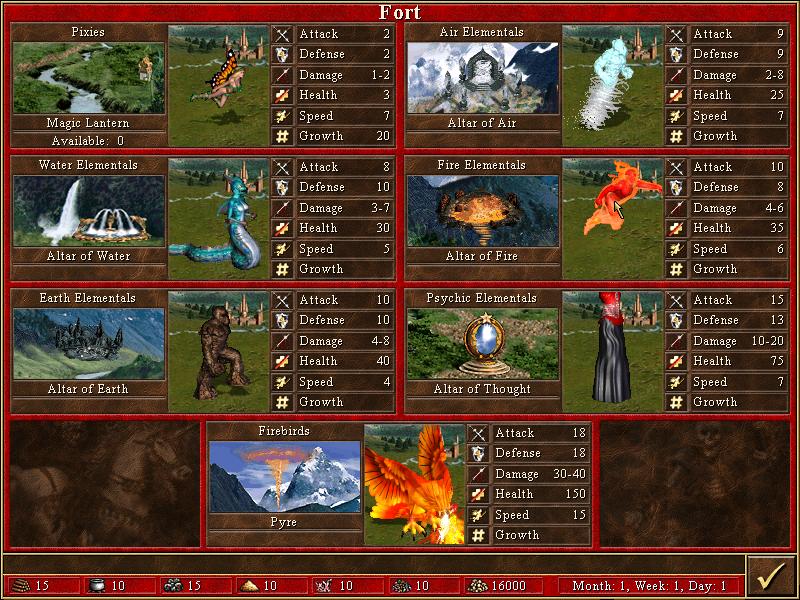
Description
The image depicts a user interface (UI) for a strategy game, specifically related to a fortress or fort where players can manage various units. Here’s a breakdown of the key labels and features:
Layout and Sections:
-
Top Header:
- Displays the title "Fort" indicating the context.
- Month, Week, Day: Shows the current game date (Month: 1, Week: 1, Day: 1), which is crucial for gameplay progression.
-
Unit Displays:
- Each row showcases different elemental units (e.g., Pixies, Air Elementals, etc.), organized in a grid layout.
- Each unit features:
- Image: Visual representation of the unit on the left.
- Type: Name of the unit above the image.
- Altar: Specifies the altar associated with the unit (e.g., Altar of Water), indicating the unit's origin.
-
Attributes:
- Attack: Numeric value indicating offensive power.
- Defense: Numeric value indicating protective strength.
- Damage: Range of damage the unit can inflict (e.g., 1-2).
- Health: Total hit points of the unit.
- Speed: Movement rate in the game, affecting how quickly the unit can act.
- Growth: Indicates how many new units will be produced per week.
Additional Features:
- Magic Lantern: A unique item at the top indicating availability (0 available), likely a feature granting special abilities or enhancements.
- Firebirds: Shown at the bottom, highlighting a singular powerful unit with higher stats, emphasizing its significance in the game.
Form and Function:
- The layout is a grid structure, allowing for easy comparison between units.
- Use of contrasting colors (red borders and background) helps to distinguish various sections and draw attention to important features.
- The clear labeling of units and their attributes allows players to make quick strategic decisions based on the strengths and weaknesses of each unit.
This UI serves both a functional and aesthetic purpose, facilitating gameplay while providing an engaging visual experience.
Software
Heroes of Might and Magic 3: Complete
Language
English
Created by
Tags
Sponsored
Similar images
editor options: place units, set diplomacy, edit terrain

Age of Empires 2 Definitive Edition
The interface presents a series of labels that serve different functions within the application. Each label is designed as a rectangular button with a distincti...
scenario editor: place units, rotate or garrison them

Age of Empires 2 Definitive Edition
The UI features a layout that prioritizes functionality for managing game elements, specifically a unit representation. Player Information Section: At t...
match statistics: k/d ratio, buildings razed, units converted, largest army
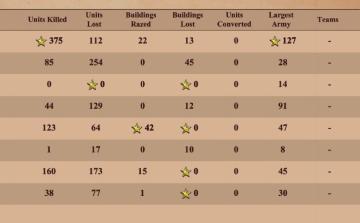
Age of Empires 2 Definitive Edition
The image presents a table summarizing various game statistics, likely from a strategy or war simulation game. Here’s a breakdown of the UI labels and features:...
infirmary: injured units, grunt zone
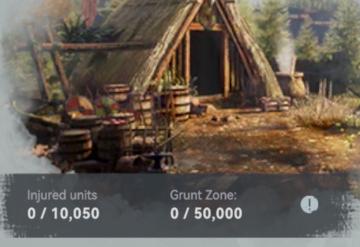
Viking Rise
The UI features in the image present key information related to a game interface, likely focused on unit management and resource tracking. 1. Injured Units...
you've entered battle, victory report: wounded troops, dead units
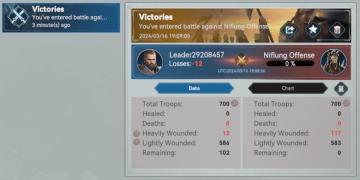
Viking Rise
The user interface (UI) in the picture presents a battle summary related to a game, focusing on victories against an opponent named "Niflung Offense." Key...
choose output and input audio device (speakers, microphone)

Panicore
The user interface (UI) in the picture presents audio settings for a gaming system. Here’s a breakdown of its features and functions: 1. Tabs: At the top,...
build air draft dialog
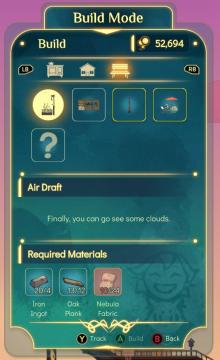
Spiritfarer: Farewell Edition
The UI is organized into distinct sections, clearly labeled for ease of navigation. At the top, the "Build Mode" header indicates the current mode, alongside an...
social network sidebar options
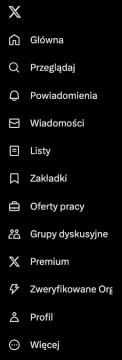
x.com
Interfejs użytkownika przedstawia zestaw ikon i etykiet, które pełnią różne funkcje w aplikacji. 1. Główna Ikona domu wskazuje na stronę główną lub pulp...
 M S
M S